New Products
-
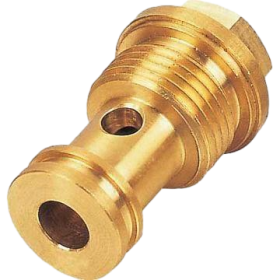
Custom Turn-Mill Combination brass parts
-
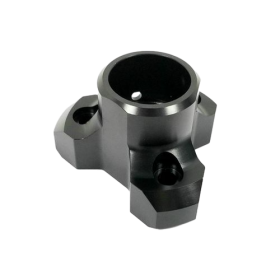
Custom Turn-Mill Combination parts
-
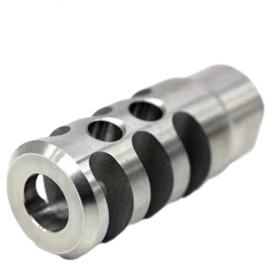
Precision CNC Turning Parts Stainless Steel shaft accessories
-
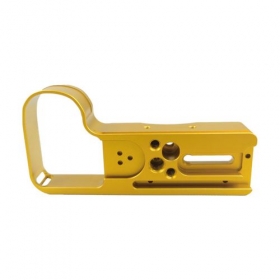
Precision CNC Custom Made Colorful Anodized Aluminum milling parts
-
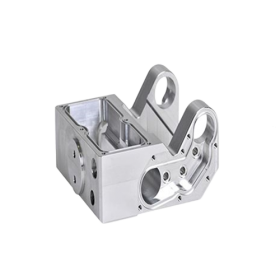
Custom CNC Milling Automated Machinery and Equipment Parts
-
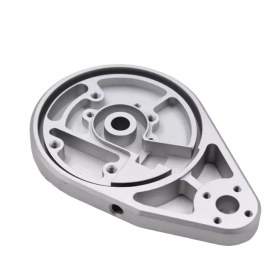
OEM/ODM Custom High Precision Metal CNC Machining/Milling/Turning Service CNC Turning Part
5052 vs. 6061 Aluminum Alloys: Differences in Properties, Strength, and Uses
In the expansive world of aluminum alloys, 5052 and 6061 are two widely - used options, each presenting a unique set of characteristics that make them suitable for diverse applications. Whether you're involved in automotive manufacturing, aerospace engineering, or general - purpose fabrication, understanding the disparities between these alloys is crucial for optimizing performance and ensuring cost - effectiveness.
1. Composition and Alloying Elements
5052 Aluminum Alloy
The primary alloying elements in 5052 are magnesium (Mg) and chromium (Cr). Magnesium, present in significant amounts, is responsible for enhancing the alloy's strength. It also contributes to the alloy's excellent corrosion resistance, making 5052 a reliable choice for applications where exposure to moisture or corrosive substances is expected. Chromium, on the other hand, helps in improving the alloy's overall structure and stability.
6061 Aluminum Alloy
6061 contains magnesium, silicon (Si), and a small amount of copper (Cu). The combination of magnesium and silicon forms magnesium silicide (Mg₂Si) precipitates during heat treatment. These precipitates play a pivotal role in strengthening the alloy. The addition of copper further enhances its strength and hardness, while also improving its machinability to some extent.

2. Mechanical Properties
Strength
Tensile Strength
· 5052 aluminum alloy has a moderate tensile strength. In its annealed state, it typically offers a tensile strength of around 170 - 210 MPa. However, when it is strain - hardened, the tensile strength can increase significantly, reaching up to 300 MPa or more. This makes it suitable for applications where a balance of formability and strength is required.
· 6061 aluminum alloy, on the other hand, generally has a higher tensile strength. In the T6 temper (solution heat - treated and artificially aged), which is a common state for 6061, it can achieve a tensile strength of approximately 260 - 310 MPa. This makes 6061 more suitable for applications that demand higher load - bearing capabilities.
Yield Strength
· 5052 has a yield strength that aligns with its tensile strength characteristics. In the annealed condition, it may have a yield strength of around 70 - 90 MPa, which can increase to 250 MPa or more after strain - hardening.
· 6061 in the T6 temper exhibits a relatively high yield strength, often in the range of 240 - 270 MPa. This high yield strength means that 6061 can withstand significant stress without permanent deformation.

Hardness
· 5052 aluminum alloy has a moderate hardness level. This allows for easy forming and shaping processes, such as bending and rolling. Its hardness can be adjusted through heat treatment and cold - working processes. For example, in the annealed state, it is relatively soft, making it malleable for initial shaping, while strain - hardening can increase its hardness for better wear resistance.
· 6061 is generally harder than 5052, especially in the T6 temper. The presence of magnesium silicide precipitates and the addition of copper contribute to its increased hardness. This hardness makes 6061 more resistant to abrasion and indentation, making it suitable for applications where the material may be subject to mechanical wear.
Ductility
· 5052 is known for its good ductility. It can be easily drawn, rolled, or bent into various shapes without cracking. This property makes it an excellent choice for applications that require complex forming operations, such as in the production of aluminum sheets for roofing or in the manufacturing of aluminum tubes for heat exchangers.
· 6061 also has decent ductility, but it is slightly less ductile than 5052. The heat - treatment process used to achieve its high strength in the T6 temper can reduce its ductility to some extent. However, it can still be formed into useful shapes through appropriate processing techniques.
Weldability
· 5052 has excellent weldability, making it a preferred choice for welding applications. It is less prone to cracking during the welding process. This is due to its alloy composition, particularly the high magnesium content which helps in maintaining the integrity of the welded joint. The relatively low melting point of 5052 also contributes to its ease of welding, allowing for a smooth fusion of the base materials.
· 6061 also has good weldability, but it requires more attention during the welding process to prevent cracking. The presence of copper in 6061 can make the alloy more sensitive to thermal stresses during welding. These thermal stresses can lead to the formation of cracks in the welded joint if not properly managed. Additionally, the formation of magnesium silicide precipitates during heat treatment can affect the weldability of 6061, necessitating careful control of welding parameters.
Both alloys can be welded using TIG and MIG welding techniques, with 5052 being more forgiving in terms of welding parameters.
3. Corrosion Resistance
· 5052 aluminum alloy offers excellent corrosion resistance, particularly in marine and coastal environments. The high magnesium content forms a dense and protective oxide layer on the surface of the alloy. This layer acts as a barrier, preventing further oxidation and corrosion. As a result, 5052 is commonly used in applications such as boat hulls, marine fittings, and outdoor structures in coastal areas.
· 6061 also has good corrosion resistance, but it may be slightly less resistant than 5052 in some aggressive environments. The presence of copper in 6061 can, in certain conditions, make the alloy more susceptible to galvanic corrosion if it comes into contact with other metals. However, with proper surface treatments such as anodizing, 6061 can be made highly resistant to corrosion and is widely used in both indoor and outdoor applications.
4. Heat Treatment
· 5052 aluminum alloy can be heat - treated, but its response to heat treatment is different from 6061. It is often solution - heat - treated and then aged to achieve the desired mechanical properties. However, the main strengthening mechanism in 5052 is through cold - working (strain - hardening). Cold - rolling or stretching the alloy can significantly increase its strength and hardness.
· 6061 aluminum alloy is highly responsive to heat treatment. The solution - heat - treatment followed by artificial aging (T6 temper) is a common process for 6061. This process allows for the formation of magnesium silicide precipitates, which greatly enhance the alloy's strength and hardness. Heat treatment can be carefully controlled to achieve specific mechanical property requirements for different applications.
5. Machinability
· 5052 has good machinability, but it may produce a gummy or stringy chip during machining operations. This can sometimes cause issues with tool wear and chip evacuation. However, with proper cutting tools and machining parameters, such as using sharp carbide tools and appropriate cutting speeds and feeds, these issues can be mitigated.
· 6061 generally has better machinability compared to 5052. The addition of copper and the structure of the alloy make it easier to machine. It produces more manageable chips during cutting operations, and the tool life is often longer when machining 6061. This makes 6061 a preferred choice for applications that require complex machining operations, such as in the production of precision - machined parts for the automotive or aerospace industries.
6. Applications
Automotive Industry
· 5052 is often used in automotive applications where corrosion resistance and formability are crucial. For example, it can be found in fuel tanks, where its resistance to corrosion from fuel and moisture is essential. It may also be used in body panels, especially in areas where the panels need to be easily formed into complex shapes.
· 6061 is widely used in the automotive industry for engine components such as cylinder heads, pistons, and engine blocks. Its high strength and heat resistance make it suitable for these applications. It is also used in suspension parts, such as control arms and wheel hubs, where it can withstand the mechanical stresses associated with vehicle movement.
Aerospace Industry
· 5052 may be used in non - structural or semi - structural components in the aerospace industry. For example, it can be used in interior panels, where its corrosion resistance and formability are beneficial. It may also be used in some aircraft fuel systems due to its resistance to fuel - related corrosion.
· 6061 is a staple in the aerospace industry for structural components. Its high strength - to - weight ratio makes it ideal for aircraft wings, fuselage frames, and landing gear components. These parts need to withstand extreme forces during flight, and the properties of 6061 make it a reliable choice for ensuring the safety and performance of the aircraft.
Construction Industry
· 5052 is commonly used in the construction industry for roofing and siding materials. Its corrosion resistance and ability to be formed into large sheets make it a popular choice for protecting buildings from the elements. It can also be used in window frames and door frames, especially in coastal areas where corrosion resistance is a priority.
· 6061 is used in construction for structural applications such as beams and columns in some industrial buildings. Its high strength allows it to support significant loads. It may also be used in curtain walls and other architectural features where both strength and aesthetic appeal are important.
General Fabrication
· 5052 is a popular choice for general - purpose fabrication due to its good combination of properties. It can be used in the production of various consumer goods, such as aluminum containers, furniture components, and decorative items. Its formability allows for the creation of unique and complex designs.
· 6061 is also used in general fabrication, especially for applications that require a stronger material. It can be used in the production of industrial equipment, such as machine frames and brackets, where its high strength and good machinability are advantageous.
Conclusion: Making the Right Choice
In conclusion, 5052 and 6061 aluminum alloys have distinct differences in their composition, mechanical properties, corrosion resistance, heat - treatment response, machinability, and applications. When choosing between these two alloys, it's essential to consider the specific requirements of your project, whether it's the need for high strength, excellent corrosion resistance, or ease of machining. By making an informed decision, you can ensure the success of your manufacturing or construction project. If you have any further questions or need assistance in selecting the right aluminum alloy for your needs, feel free to contact our team of experts.

 Evan Xiao
Evan Xiao